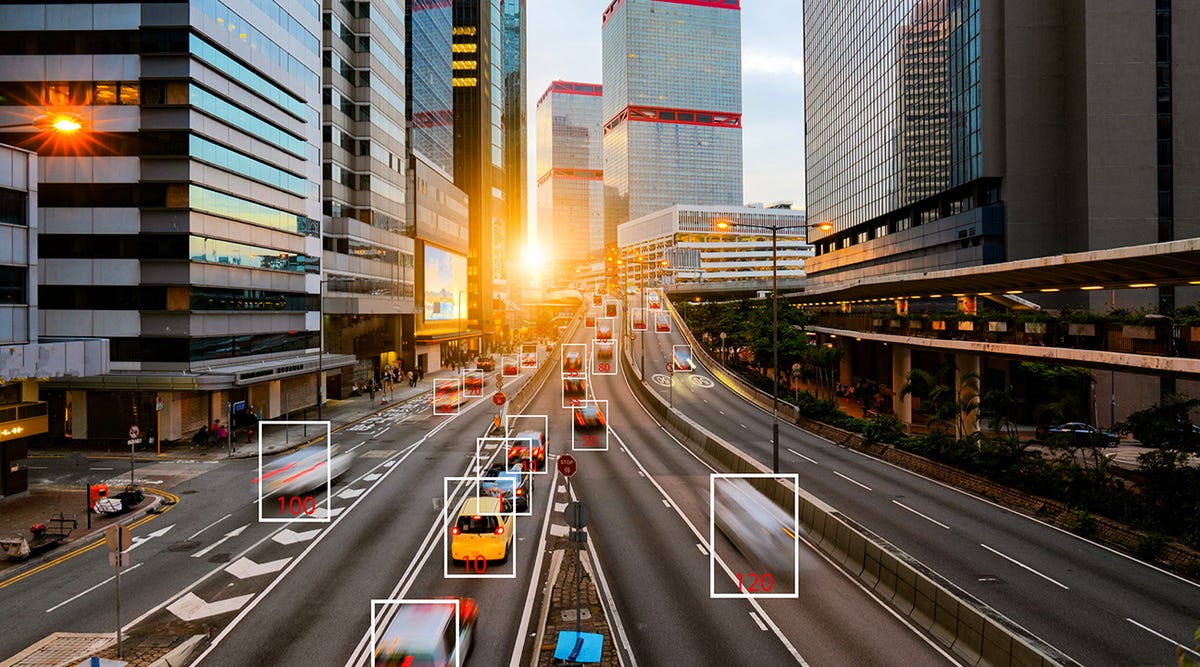5 ways to use predictive insights to get the most from your data

With the proliferation of SaaS tools, we seem to be collecting so much more
data, yet most companies still struggle to integrate it properly to extract
insights that would be indicative of future performance. There are a variety of
reasons for that: internal data privacy, legacy mindset around who owns what
data, lags in data warehousing strategy or operational know-how about the
mechanics of integrating it. ... The CMO Survey found that after a decade of
integrating customer data across channels, marketers are still struggling, with
most giving their organization a 3.5 out of 7 score on the effectiveness of
their customer information integration across purchasing, communication and
social media channels. ... Too often organizations are overly focused on
dashboards and analyzing past trends to determine future actions. Dashboards and
reports are often thought of as the final deliverables of data, but this
thinking is limiting data’s value. Think about how your acquisition,
monetization and retention journeys are orchestrated today, then feed predictive
scoring data right into those business systems and tools.
Coming Clean: Why Cybersecurity Transparency Is A Strength, Not A Weakness

In the wake of the new disclosure proposals, the management of cybersecurity
events can no longer be an afterthought in maintaining operating standards. It’s
now been elevated to a major concern along with financial risks, such as capital
and credit risk. Despite the technical challenges, compliance is generally
straightforward. Organizations must develop discipline in how they detect and
defend against cyber threats. In addition, they must improve the way they report
on them. If they don’t want their next cyber incident to turn into a material
event, they need to minimize the risk of a breach in the first place. Remember,
the opposite of due diligence is negligence. One way to get started is to focus
on the application layer, as that’s where the “money” is. Decades of focus on
network-based threats have improved the protection from some cyberattacks, but
many business applications remain vulnerable. Applications suffer numerous
vulnerabilities outlined by the OWASP Top 10. These are known, common threats
that can be countered by using Web application firewalls.
AI eye checks can predict heart disease risk in less than minute, finds study

“This AI tool could let someone know in 60 seconds or less their level of risk,”
the lead author of the study, Prof Alicja Rudnicka, told the Guardian. If
someone learned their risk was higher than expected, they could be prescribed
statins or offered another intervention, she said. Speaking from a health
conference in Copenhagen, Rudnicka, a professor of statistical epidemiology at
St George’s, University of London, added: “It could end up improving
cardiovascular health and save lives.” Circulatory diseases, including
cardiovascular disease, coronary heart disease, heart failure and stroke, are
major causes of ill health and death worldwide. Cardiovascular disease alone is
the most common cause of death globally. It accounts for one in four deaths in
the UK alone. While several tests to predict risk exist, they are not always
able to accurately identify those who will go on to develop or die of heart
disease. Researchers developed a fully automated AI-enabled tool, Quartz, to
assess the potential of retinal vasculature imaging – plus known risk factors –
to predict vascular health and death.
Mobile Application Security Best Practices

Strong credentials are a must for both web and mobile application development.
For mobile apps, you can choose to either have a native login flow, which means
the user enters their credentials within the app, or a web-based login flow,
where they are directed to a web browser to login. Native login flows provide a
better user experience but are generally thought to be less secure. Hypermedia
authentication APIs are a solution now popping up to bridge this gap and provide
the best of both worlds. Hypermedia authentication APIs interact with the
authorization server directly without the need for an intermediary like the
browser window. Regardless of how the user enters their credentials, your app
should enforce some type of password policy to ensure a strong password is used,
and it should not store the access and refresh tokens anywhere except secure
storage (like the iOS keychain or Android Keystore). ... Finally, your mobile
app should follow best practices for secure coding, just as you would with web
applications. Security should be incorporated from the start of the app’s
design, with testing occurring throughout the development process.
Cybersecurity threats: what awaits us in 2023?

Businesses will still be mostly concerned with ransomware. The conflict between
Russia and Ukraine has marked an end to any possible law enforcement cooperation
in the foreseeable future. We can therefore expect that cybercrime groups from
either block will feel safe to attack companies from the opposing side. Some may
even perceive this as their patriotic duty. The economic downturn will lead more
people to poverty, which always translates to increased criminality, and we know
ransomware to be extremely profitable. ... Zero trust will take on greater
prominence with the continued role of the remote and hybrid workplace. Remote
work will continue driving the need for zero trust since hybrid work is now the
new normal. With the federal government mandating agencies to adopt zero-trust
network policies and design, we expect this to become more common and the
private sector to follow suit as 2023 becomes the year of verifying everything.
... In 2023, we might see a slight decline in the raw number of ransomware
attacks, reflecting the slowdown of the cryptocurrency markets.
Google and Renault are creating a 'software-defined vehicle'

Renault will leverage Google's Cloud technology to securely manage data capture
and analytics. They'll also use Google's ML and AI capabilities. "Our
collaboration with Renault Group has improved comfort, safety, and connectivity
on the road," Sundar Pichai, CEO of Google and Alphabet, said in a statement.
"Today's announcement will help accelerate Renault Group's digital
transformation by bringing together our expertise in the cloud, AI, and Android
to provide for a secure, highly-personalized experience that meets customers'
evolving expectations." Google shares that some features of the SDV will include
predictive maintenance, accurate real-time detection of vehicle failures, a
better driving experience, and insurance models reflective of driving behaviors.
"Equipped with a shared IT platform, continuous over-the-air updates, and
streamlined access to car data, the SDV approach developed in partnership with
Google will transform our vehicles to help serve future customers' needs," said
Luca de Meo
Why automating finance is just an integration game

What is clear is the increasing demand for decision intelligence with financial
analytics at its heart. RPA suppliers are increasingly repositioning themselves
as automated intelligence companies, using RPA tools to drive key functions,
such as finance. Gartner believes a third of large organisations will be using
decision intelligence for structured decision-making to improve competitive
advantage in the next two years. Recent research by enterprise application
integration firm Jitterbit backs this up. Focusing on mid-sized companies
(referred to as Mittelstand) in the DACH region (comprising Germany, Austria and
Switzerland), Jitterbit found that 73% of these businesses want to be
hyperautomated within three years because “the health of their company depends
on it”. The barriers to achieving this are typical – too many manual data
process, isolated data silos and a lack of departmental integration. What is
becoming clear is that financial analytics can be the core and the catalyst of
intelligent automation transformations.
Detecting Cyber Risks Before They Lead to Downtime

To avoid costly downtime, threats to operational continuity must be detected and
investigated as early as possible. That can be accomplished by scanning
connected devices for configuration changes and vulnerabilities. However, unlike
traditional IT, OT assets cannot be continuously scanned in the same manner and
many risks will remain unnoticed. Instead, a system designed for manufacturing
environments must have the ability to passively monitor the network
infrastructure to locate assets and detect behavior changes and anomalies. That
requires understanding dozens of industrial protocols and continuously
monitoring the communications and checking against a database of OT/ICS-specific
Indicators of Compromise (IOCs, or evidence of a breach) and CVEs. The bane of
many monitoring systems is they produce a flood of information about potential
harm, not all of it urgent. To be useful, critical alerts must be prioritized
based on operational or cybersecurity risk so the right team can respond. For
example, OT engineers need to quickly spot undesired process values, incorrect
measurements or when a critical device fails so they can resolve issues more
quickly.
Challenges to Successful AI Implementation in Healthcare

Incorporating AI systems could improve healthcare efficiency without
compromising quality, and this way, patients could receive better and more
personalized care. Investigations, assessments, and treatments can be simplified
and improved by using AI systems that are smart and efficient. However,
implementing AI in healthcare is challenging because it needs to be
user-friendly and procure value for patients and healthcare professionals. AI
systems are expected to be easy to use and user-friendly, self-instructing, and
not require extensive prior knowledge or training. Besides being simple to use,
AI systems should also be time-saving and never demand different digital
operative systems to function. ... The healthcare experts noted that
implementing AI systems in the county council will be difficult due to the
healthcare system’s internal capacity for strategic change management. For the
promotion of capabilities to work with implementation strategies of AI systems
at the regional level, experts highlighted the need for infrastructure and joint
ventures with familiar structures and processes.
AI Ethics: Four Essentials CIOs Must Know

Enterprises must investigate how the data used to train the algorithm is used in
order to develop explainable AI. Although this won’t address the bias issue, it
will guarantee that firms are aware of the underlying causes of any problems so
they can take appropriate action. Synthetic data, in addition to actual data
sets, is essential for addressing ethical issues. For instance, synthetic data
can be used to correct biases in real data that are unjust and skewed toward
particular groups of individuals. Additionally, synthetic data can be used to
boost the volume and produce an objective dataset if the volume is inadequate.
... Executives must design AI systems that can instantly identify fabricated
data and immoral behavior. This necessitates screening suppliers and partners
for the improper use of AI in addition to examining a company’s own AI. Examples
include the employment of convincing false text and videos to discredit
competitors or the use of AI to carry out sophisticated cyber-attacks. As AI
technologies become more accessible, this problem will worsen.
Quote for the day:
"Good leaders make people feel that
they're at the very heart of things, not at the periphery." --
Warren G. Bennis
No comments:
Post a Comment